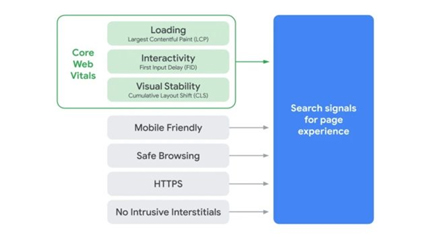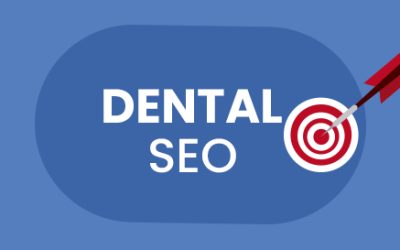Every year Google makes hundreds of changes in its algorithm to create best user experience by giving them faster, relevant results. This intention will remain unchanged, and this unchanged behaviour of Google is the driving force behind big changes in the digital marketing strategies. Experts in digital marketing always updates themselves about Google’s algorithm changes and bring out new ideas or innovations in SEO to make organic marketing easier.
Here are the 3 biggest upcoming changes for SEO:
- Google Core Web Vitals Update/ Page Experience Ranking Signal: To provide fast, intuitive page experience, Google is introducing a new ranking signal called Page Experience signal, which is expected in 2021. The upcoming change incorporates page experience metrics like load time and interactivity. It combines Core web Vitals with existing user experience signals, to improve the way it evaluates the overall experience provided by a page. In other words, it provides a unified set of metrics for the website owners, marketers and developers to evaluate the on-site experience.
The Page Experience Ranking Signal, which is expected to launch in next year, provide an early look at the work being done so far to help the site owners to prepare. It incorporates Google’s existing signals and newly updated Core Web Vitals, a set of unified metrics like speed, responsiveness and visual stability for page experience.
The signal consists of the Core Web Vitals and the following page experience metrics which is already existing,
- Mobile-friendliness
- Safe-browsing
- HTTPS-security
- Intrusive Interstitial Guidelines

Imagesource:https://binaryfountain.com/wp-content/uploads/2020/06/Search_Page_Experience_Graphic-640×360.jpg - Core Web Vitals: The Core Web Vitals are a set of unified metrics that are designed to help site owners evaluate the user experience they are providing which are related to speed, responsiveness or interactivity and visual stability.
- Largest Contentful Paint (LCP): LCP measures the loading time of a page’s main content. Ideally, users are not required to wait more than 2.5 seconds from the time it starts loading. That means an ideal LCP measurement is 2.5 seconds or faster.
- Cumulative Layout Shift (CLS): It measures the visual stability. CLS is the unexpected shifting of web page elements while the page is still loading. This unexpected shifting causes poor user experience. So, minimizing CLS is important. An ideal measurement is less than 0.1.
- First Input Delay (FID): FID is used to measure the time it takes for a page to become interactive. The aimed score is less than 100 milliseconds.
Imagesource:https://searchengineland.com/figz/wp-content/seloads/2020/05/google-core-web-vitals-1590577793-800×232.png
Google’s Web Core vitals may change every year in order to provide a good web page experience, but for now these are the Core Web Vitals. Google help site owners to provide their users a best experience by adding Core Web Vitals combining with the existing experience metrics. With the help of this, when Google finds that a page provides high quality user experience, then it will likely rank the page higher in search results. However, when it comes to ranking, relevant content is really important and will rank well even if the page had a poor page experience signal.
- Search by Intent: Before Google’s Hummingbird update in 2013, it was easy to optimize your content for clunky keyword strings to come in front of your target audience. On the user side, there was no way to filter out irrelevant results that results in a frustrating experience for them. Hummingbird allows Google search engine to provide relevant results to the users by understanding the search intent. It places great value on natural language queries, considering context and meaning over individual keywords.
In 2019, Bidirectional Encoder Representations from Transformers (BERT), a neural network-based technique for Natural Language Processing (NLP) pre-training were introduced. It analyses user queries and serves up content based on contextual clues. It processes the words in relation to all other words in a sentence, rather than one-by-one in order. It understands the user intention by considering the full context of a word by looking at the words that is present before and after it.Today SEO demands a big-picture approach that brings long-tail keywords, semantically-related search terms and understand deeply the search intention of people. You must optimize also for voice in a conversational way. You should look into audience insights, and find out what kinds of questions people are searching for, and what kinds of content repeats.
- Brand Strength and Mentions Online: Great SEO techniques can help your content to increase awareness and reach. But without having a strong brand, it is difficult to get the most bang for your marketing dollars. If you look at the standards laid out in Google’s EAT (Expertise, Authoritativeness and Trustworthiness) guidelines, brand with more recognition and resources tend to be the products and services users trust. But it doesn’t mean that small brands have no luck. If the smaller brands and micro-influencers really understand their nice, they can build more recognition. When it happens, it improves their rankings and they can reach more people with their organic content.
These changes will make things easier for marketers and improves best user experience. Applying right SEO strategy with the help of SEO company will help you to stay ahead of the competition, that means preparing new SEO strategy according to Google’s change in algorithms will help you to fight against with your competitors by providing your users the best experience and this will help you to reach or remain at the top position.





